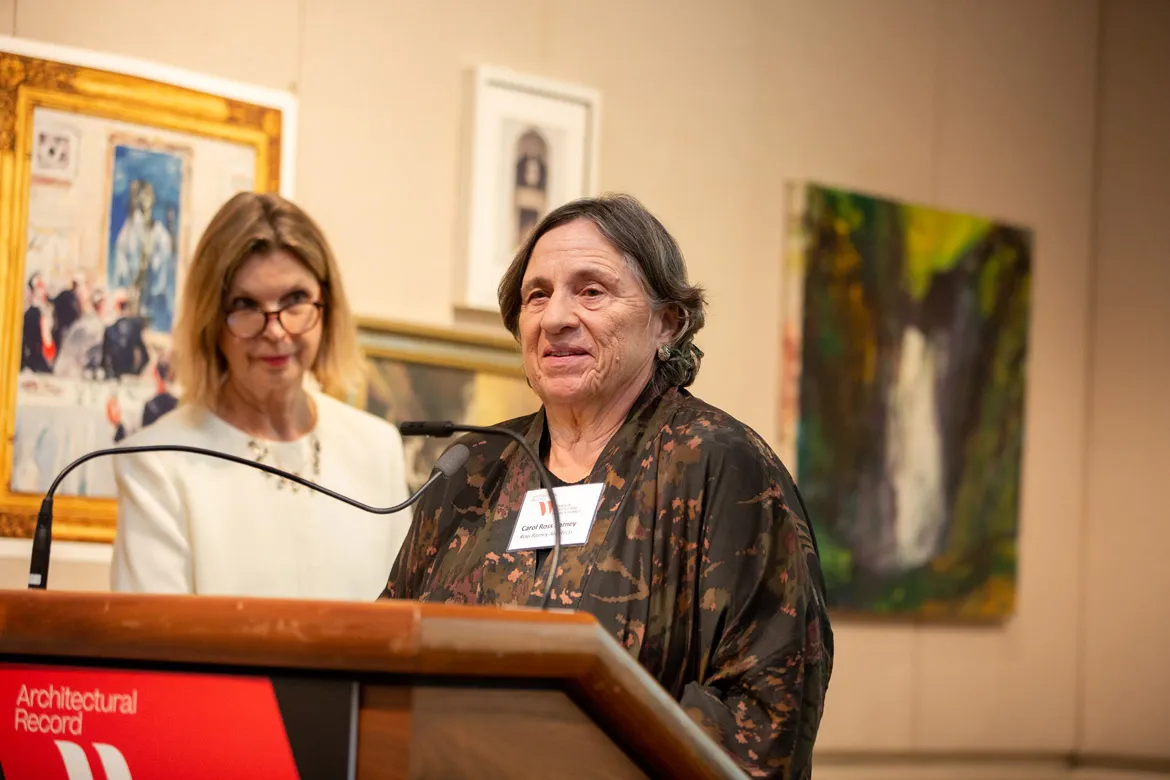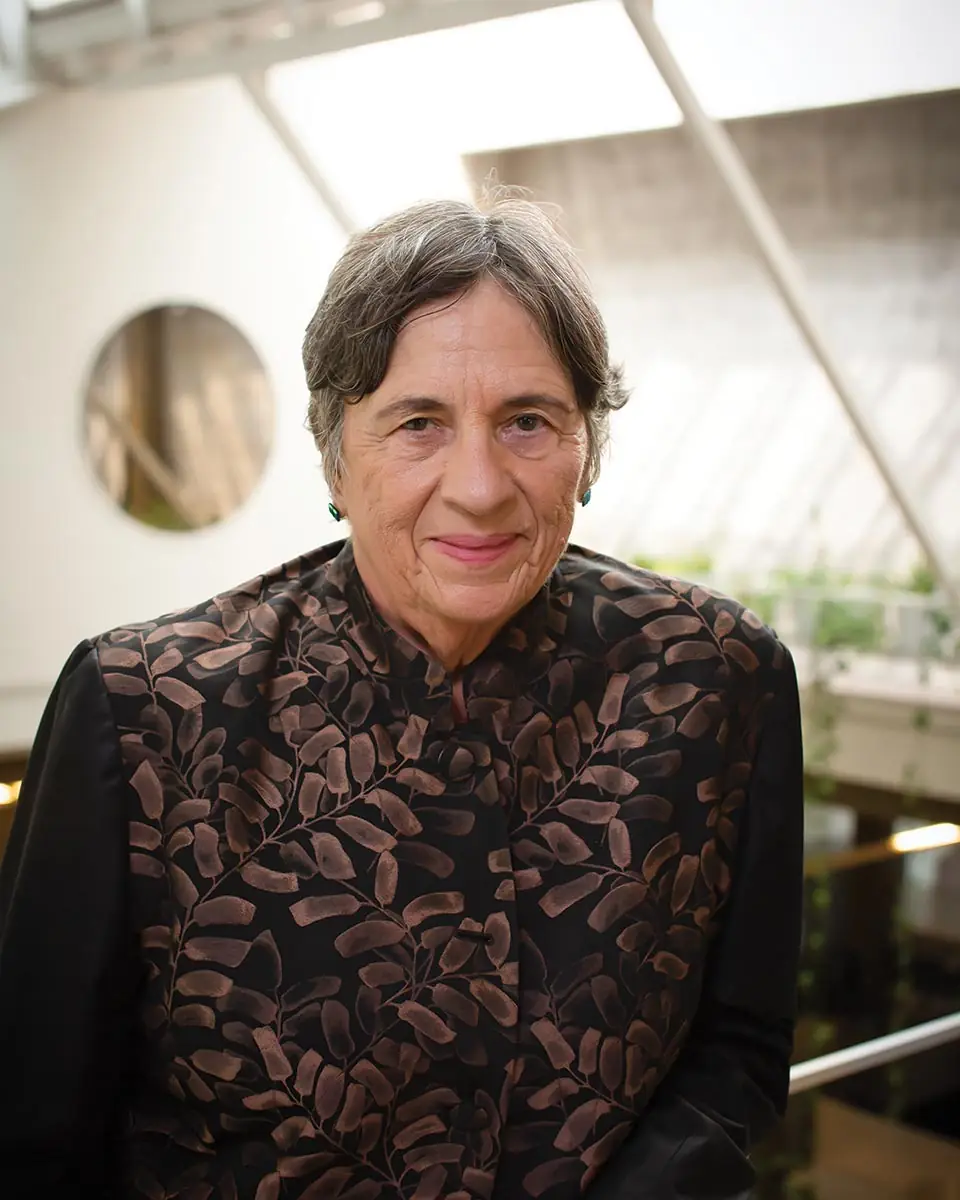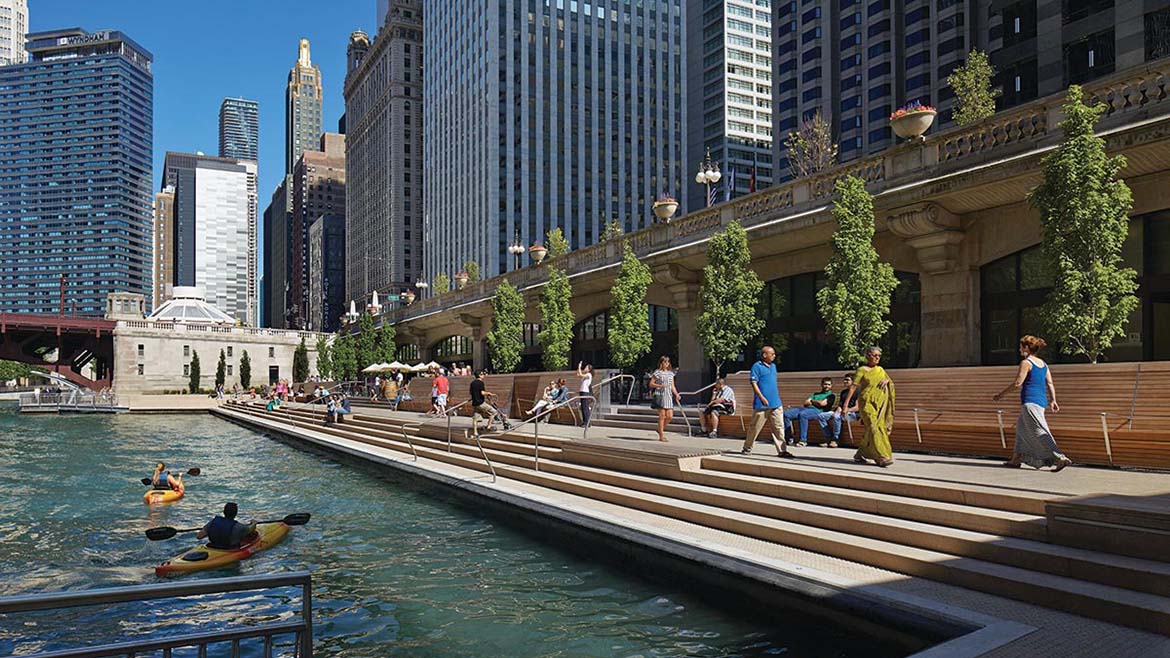There was a time when Carol Ross Barney could not have imagined winning the AIA Gold Medal. After all, “most of our work wouldn’t even be called buildings,” she says. Although her firm, founded in 1981, has a portfolio with plenty of buildings to its credit, much of the work she’s most proud of—transit stations, public parks, pedestrian streetscapes—fits a broader definition of architecture. “There’s no such thing as something that doesn’t need to be designed,” Ross Barney says.
Last month, the American Institute of Architects awarded the 2023 AIA Gold Medal to Ross Barney, 73, making her the first living woman to win the award as an individual (Julia Morgan received the recognition decades after her death; Denise Scott Brown in 2016 and Angela Brooks in 2022 each won with their partners). Ross Barney is also the sixth Chicago architect to be awarded the medal—but the first since Ludwig Mies Van Der Rohe in 1960. record honored Ross Barney with a Women in Architecture Award as Design Leader in October.

Carol Ross Barney receiving her Design Leader award from RECORD's editor-in-chief Cathleen McGuigan at this year's Women in Architecture Awards in October. Photo © Kristen Blush

Carol Ross Barney. Photo © Tara White
Her firm’s four decades of steadfast collaboration with public agencies has resulted in an outsize impact on Chicago’s urbanism, especially as the social crises of recent years moved architectural discourse closer to her world. In 2020, the protests over the murder of George Floyd focused attention on the reality that public space is experienced, policed, and designed differently for different groups of people. And the Covid-19 pandemic pushed people outside, often into a reinvented, ad hoc public space. For Ross Barney, the professional ethos of this moment is simple: design excellence for all is a right, not a privilege. “One of the things I’ve always absolutely adored about doing public work is that it lets me keep my hat on as an ‘owner,’ ” she says. “Yes, I’m their architect, but I’m also a citizen.”
“If ever there was a time, it’s now for Carol,” says Patricia Saldana Natke, founder of Chicago-based UrbanWorks. “Her designs embody hope, tackling complex social, spatial, and cultural challenges by creating urban connectivity. Her determination to consider many voices in her architecture is remarkable and worthy of emulation.”
Ross Barney’s firm is located in Harry Weese’s former studio space, and, in the pantheon of Chicago architects, his work on Washington, D.C.’s subway stations—with their Brutalist material palette and grand vaults—is a particular inspiration for her. Ross Barney’s own transit projects for the Chicago Transit Authority (CTA) have applied similar levels of material and formal coherence. At the open and airy Cermak–McCormick Place CTA Station, a perforated steel scrim shelters commuters from harsh winter winds while still offering views outward to the city. Across town at the Morgan Street CTA Station, a pair of glass-clad steel frames pay homage to the archetypal Chicago structural system.
Perhaps Ross Barney’s crowning achievement has been the Chicago Riverwalk, which reshaped the edge of the Chicago River into one of the city’s most treasured civic assets. Designed as a series of outdoor rooms, Ross Barney (who partnered with the landscape architecture firm Sasaki on the project) delivered a terraced amphitheater, a kayak launch, a floating fish habitat, and more—bringing life and activity back to 1¼ miles of riverfront. This kind of public impact doesn’t happen without advocacy, pushing Ross Barney beyond the drafting table. The Riverwalk required an act of Congress to build; as a result of her lobbying efforts, 30 feet of public space is required for any new development along the Chicago River, ensuring that future building continues this ribbon of open space.
Despite the challenges that remain for women in the profession, Ross Barney says that her gender has sometimes been an advantage because “the same things aren’t expected of you.” While many men were pushed toward high-profile commercial work, women were often left with public projects, she says, that were perceived as less important. But this work came with the opportunity to have a much greater impact on the public realm.
“As a citizen designer,” she has said, “I feel empowered to fight for the ideas my people believe in and the quality they deserve.”




Post a comment to this article
Report Abusive Comment